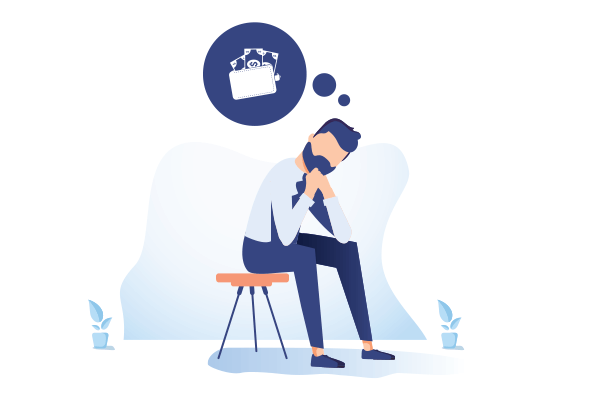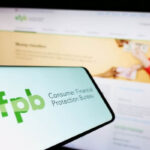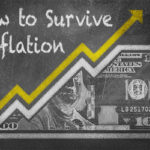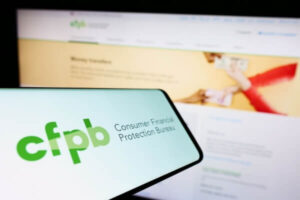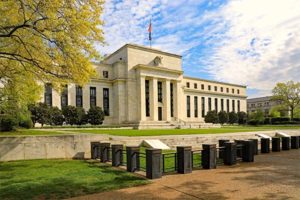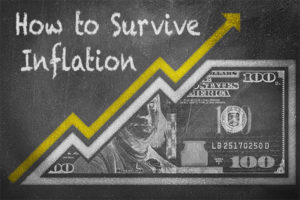With a stunning 36.5 million and counting Americans out of work because of the COVID-19 pandemic, there are a lot of people scrambling to pay their bills until they have a paycheck again.
Business owners aren’t doing any better. An estimated 100,000 small business in the U.S. have permanently shut down because of the pandemic, according to study by the National Bureau of Economic Research.
That all adds up to a lot of people who are looking for financial relief from the coronavirus.
One lifeline – loans, whether they be for personal or business use – are an option, particularly if a quick recovering economy emerges. Here’s where you can one.
Personal Loans During COVID-19
In a recent survey, 21% of those responding who were recently laid off said they plan to borrow money from family, friends or the bank.
That’s a lot of people looking to borrow money.
And there are ways to do it, even for those laid off. Borrowers need good credit and a source of income – the bank wants to be sure they can make payments. Income doesn’t have to be a paycheck, it can come from other consistent sources, like Social Security, a pension or alimony.
“Taking out a personal loan during a time of crisis can be a solid financial move, given you find the terms that meet your needs and fit within the long-term capacity of your finances,” said Jared Weitz, CEO and founder of United Capital Source Inc.
But Dennis Shirshikov, a financial analyst at FitSmallBusiness.com warns there are drawbacks. “Turning to personal financing during a crisis to support yourself or your business should only be done after cost-cutting measures,” he said. “If you take out a personal loan before you start reducing expenses, a significant portion of the loan will be wasted.”
Those who are confident they can manage a loan should first check with the local financial institution that they have a relationship with. Credit unions are a great option for members looking for a loan. Many have good deals for members, particularly if the credit union is tied to a business or industry, and the borrower is still drawing paycheck.
Online Loan Marketplaces
Another place to look for a loan is online loan marketplaces. Potential borrowers fill out an application and a variety of lenders make a pitch, offering a credit limit and rates.
Some of the most popular are Credible.com, Experian’s Credit Match and Lendingclub.
If looking online, be sure to go with a trusted source, and particularly avoid payday loans and other high-interest options that will sink you into more financial hot water. The Federal Trade Commission has information regarding bad online loan options on its website.
Home Equity Line of Credit
Those with equity in their home may be eligible for a home equity line of credit or a home equity loan. These are generally low-interest, but keep in mind you’re putting your house on the line if you can’t make the payments.
“Homeowners are currently living with historically high levels of equity and may be able to take advantage of a home equity loan or refinancing on their home,” said Weitz. “If you have recently experienced a loss in income or hit to your personal business, tapping into your home equity can provide the cushion needed to withstand shifts in the market and economy.”
401(k) Hardship Loan
Those still working who have a 401(k) can look into a 401(k) loan or hardship withdrawal.
With the loan, you’re borrowing the money from yourself at a low interest rate. Payments are made monthly, usually over two to five years. The cap is usually $50,000 or half of the balance in your account. The biggest drawback is that if you lose your job before the loan is paid back, you have to pay back what you borrowed in 90 days.
Hardship withdrawal terms are up to the employer, and, as with the loan, if you lose your job the financial penalty can be great.
Loan Alternatives for Personal Debt
It’s a good idea to consider other options before borrowing money, said Anna Barker, personal finance expert and founder of LogicalDollar.
“If you’re considering a personal loan because you need money, but are struggling to repay what you already owe, you should seriously think about whether it’s the best option for you,” she said. “The way to get out of debt is not to take on more debt. So, if you’re in that situation, a better idea would be to focus solely on paying off your existing loans.”
While paying down debt is not a quick fix like a loan can be, it pays off in the long run. There are several ways to manage debt, including doing it yourself, enlisting the help of a nonprofit credit counseling agency or consolidating debts.
- Debt management – A nonprofit credit counseling agency provides a counselor who can help you budget, and reduce the interest rate on your credit cards. . The benefit is reduced monthly payments and a chance to improve your credit score, making you a better candidate for a personal loan in the future.
- Debt consolidation – Applying for a 0% interest credit card with a large enough limit, then using it to pay off the balances on high-interest cards and other debts will give you one monthly payment to deal with. But it can be a slippery slope if you keep using the card and accumulating debt.
- Debt settlement – This is an attempt to pay less than what you owe on credit card debt. If your bank account has at least half of what you owe on credit cards – and you or someone you hire negotiates well — you could settle your debt for far less than what you owe. Do it yourself – Set a strict budget, then, while making minimum payments on most of your credit cards, pick one to pay extra on until the balance is paid off. Once that card is paid off, go to the next one.
Small Business Loans for COVID-19 Financial Assistance
A variety of loan and grant programs have sprung up as businesses have shut down because of the COVID-19 pandemic. Programs have been quickly crafted everywhere from the halls of Congress to tiny town halls across America.
The Paycheck Protection Program, part of the $2.2 trillion CARES Act passed by Congress in March, is the most talked-about, but there are many emergency money options for small businesses. Several, like the PPP, are administered by the Small Business Administration. States, municipalities, economic development organizations and more are also offering grants and loans.
Calloway Cook, president of Illuminate Labs, got a PPP loan and is waiting to find out if his business has been approved for an SBA Emergency Injury and Disaster Loan.
He said some small business owners may be considering personal loans to help keep their business afloat, but his advice is to go with the federal programs.
“The CARES Act loans have much better terms, and for smaller businesses have no personal guarantee,” Cook said. “That makes them essentially risk-free loans, because either the business succeeds and you can pay them off with business profits, or the business fails and you’re not personally liable.”
Paycheck Protection Program
The Paycheck Protection Program has provided funding to more than 4.3 million businesses since the first round was approved by Congress March 27. That round paid out $349 billion in less than two weeks, guaranteeing more than 1.6 million loans. The average loan was around $206,000, with some large corporations getting millions, raising an outcry as small businesses got short-changed. About 39 of those corporations, including Auto Nation Inc., which got $77 million, have returned the money.
The program was tweaked for the second round, and as of May 16, more than 2.7 million businesses were awarded loans, totaling more than $195 billion. The average second-round loan was $70,622.
Round Two of the PPP was approved for $320 billion. There’s about $125 billion left in the kitty, and many lenders are still taking applications.
Loan Details: You can borrow 2.5 times your average monthly payroll costs, up to a maximum of $10 million. The loans are intended to help businesses meet payroll, keeping both individuals and businesses afloat. In simple terms, if 75% of the loan money is used for payroll, and a business either maintains the payroll or quickly rehires laid-off employees within eight weeks, the loan is forgiven. If the number of employees, or wages, drops, the loan must be paid back. If it remains a loan, the interest rate is 1%, and it must be paid off in two years. In the first round, applicants had to prove their business was hurt by the COVID-19 pandemic, but those rules were loosened for the second round, with the recognition that every business that’s suffering financially has been hurt by the pandemic.
Eligibility: Business must have fewer than 500 employees and used the loan for payroll costs, healthcare benefits, insurance premiums and rent and utility payments. Borrowers must apply through a lender, and the first round made clear that small local lenders who have a relationship with the borrower were the best bets for businesses. Industry experts suggest that borrowers who don’t have that kind of lending relationship try credit unions and community development financial institutions, as well as banks.
SBA Economic Injury Disaster Loan and Advance
Loan Details: The Economic Injury Disaster Loan is a long-time SBA program aimed at assisting agricultural-related businesses during a natural disaster. The SBA is offering $10,000 advances to small businesses that does not need to be repaid. That is considered emergency assistance and gives the business some help while the SBA goes through the overwhelming number of loan applications that came in because of COVID-19.
Eligibility: Businesses, including nonprofit organizations, must have fewer than 500 employees and be engaged in production of food and fiber, ranching, livestock raising, aquaculture, or other farming and agricultural-related industries.
SBA Bridge Loans
Loan Details: SBA Express Disaster Bridge Loans are available to businesses with fewer than 500 employees that have an urgent need for cash while they are waiting for an EIDL.
Eligibility: Businesses must have a relationship with an SBA Express Lender, and loans can be for up to $25,000. They can be used as either a term loan or to bridge the gap.
SBA Debt Relief
Loan Details: The SBA will pay six months of principal, interest and fees owed for current SBA 7(a), 504 and Microloans disbursed before Sept. 27 of this year, except for PPP and EIDL. Borrowers don’t have to apply, the relief is automatic. The SBA has contacted lenders to notify them that it’s picking up the tab. The SBA has also deferred serviced home or business disaster loans that were in regular servicing status on March 1. The automatic deferments are until Dec. 31. Interest will continue to accrue, and borrowers can keep paying if they prefer. After Dec. 31, borrowers will have to start making regular principal and interest payments.
Eligibility: To be eligible, borrowers must be current and in regular servicing status for all loans.
Programs from State and Local Governments
A remarkable variety of local loan and grant programs for businesses have blossomed across the country in the wake of the pandemic.
Business owners who need financial help should start with their town or local Chamber of Commerce, as well as their state government website.
The National Association of Governors website has links to governor webpages in all 50 states, American Samoa, Northern Mariana Islands and Puerto Rico. Most of those websites link to a state COVID-19 resource page.
Chambers of commerce all have online resource information for both members and nonmembers. The U.S. Chamber of Commerce has extensive information for businesses dealing with COVID-19 issues on its site, as well as links to state chambers.
A unit of the SBA, the Small Business Development Centers, is another clearing house for resources. Every state has a state office and regional branches.
Programs from Private Companies
A few large private corporations are offering grants for small businesses:
Amazon Neighborhood Small Business Relief Fund — Amazon’s program is for businesses in the Seattle area. To be eligible for grants from the $5 million grant fund, a business must have fewer than 50 employees and less than $7 million in annual revenue.
Facebook Small Business Grants Program – Facebook’s program is worldwide, and is awarding $100 million worth of grants and Facebook advertising credits to up to 30,000 small businesses. On its website for the program, Facebook says it’s received an “overwhelming” amount of applications from the U.S., and only a portion will get grants. It says new resources will be announced soon.
GoFundMe Small Business Relief Fund – The fundraising site is running a fundraiser of its own, which began March 24 and as Sunday, May 17, was about $600,000 from reaching its $2.4 million goal. The money is being dispersed in $500 one-time matching grants to small businesses that have been hurt by a government-mandated COVID-19 business shutdown. It must be used to support employees or pay business expenses.
Sources:
- Bartick, A.; Bertrand, M; Cullen, Z; Glaeser, E; Luca, M; Stanton, C., ND, How Are Small Businesses Adjusting to COVID-19? Early Evidence from a Survey. Retrieved from https://www.nber.org/papers/w26989
- Simon, M. (2020, May 14) Important Updates to the PPP May Equal More Money for Your Small Business. Retrieved from https://www.forbes.com/sites/morgansimon/2020/05/14/important-updates-to-the-ppp-may-equal-more-money-for-your-small-business/#56b7f32e3777
- N.A. (2020, May 12). Retirement Confidence Today. Retrieved from https://www.simplywise.com/blog/blog/retirement-confidence-index/
- N.A. (ND) Online Payday Loans. Retrieved from https://www.consumer.ftc.gov/articles/0249-online-payday-loans
- N.A. (ND) 401k Loans, Hardship Withdrawals and Other Important Considerations. Retrieved from inra.org/investors/learn-to-invest/types-investments/retirement/401k-investing/401k-loans-hardship-withdrawals-and-other-important-considerations
- Herzog, K. (2020, May 11) Which Public Companies Have Returned Their SBA PPP Loans? Retrieved from https://www.entrepreneur.com/article/349848
- N.A. (ND) Coronavirus Relief Options. Retrieved from https://www.sba.gov/funding-programs/loans/coronavirus-relief-options

